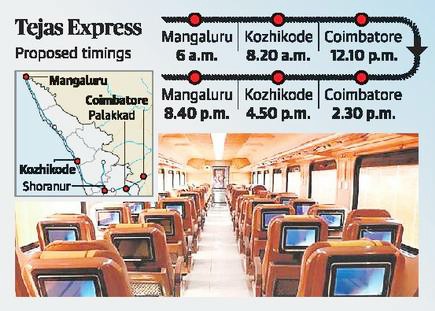The economics of private Railway services in India and What would be the fares on private trains be like?
Responses to the event of private trains starting services on Indian tracks has generally ranged from guarded scepticism to outright pessimism. The main fear of course, has been that ticket prices by private operators will rise to exorbitantly high levels making them unaffordable for most Indians, both pricing economically weaker sections of the society out of the trains and alienating people who can afford them, who would find it better value to fly or drive.
The reasoning behind this is that since their motive is profit alone, their services will gear towards the luxurious side as their target market will be only those who can afford such fares.
Examples of cutthroat predatory pricing by private interstate luxury bus operators (Volvos) and airlines during holidays and weekends or app-taxis when it rains are cited as examples. But will high ticket fares really be the outcome of private railway services? Let us analyse what the scene holds to find out.
This exercise of private trains is a big unknown. Nothing of this type or scale has been ever attempted in the living memory of anyone in this country. As much as we expect things to turn out in a certain way according to our concepts, it is more likely that they won’t.
For instance, the argument that ‘for profit’ private trains will result in high-priced exclusionary services might be misplaced to begin with. The ‘poor people will not be able to afford it’ clause, like this for private trains forms the basis of all outrage against seemingly every transportation infrastructure project undertaken in India, from urban metro systems to High Speed Rail (Bullet Train) projects.
It is inferred that the vast majority of unwashed masses of this country will not be able to afford these ‘fancy’ transport services without massive government subsidies, and as a result these systems will run empty and will ultimately fail.
So, why waste resources setting up these bourgeois systems at the cost of the sweat off the collective back of the proletariat?
However, in the end it usually turns out that such fears are unfounded. As history has proved with the example of the railway systems of India to the Kochi Metro, the ‘common man’ general public very quickly takes to the new modes with much enthusiasm.
We Indians have this unhealthy precedent of outright labeling any novel or ‘modern’ transportation (or any other) system as ‘expensive’, ‘flashy’, ‘unaffordable’, ‘elite’, ‘unnecessary’, etc. Why we imagine ourselves worthy only of miserable, subsidised, half-century old status quo systems is a topic for another discussion.
But how could anyone afford luxury trains on a regular basis?
The private luxury train fallacy
While analysing the factors behind railway pricing, we should also try to understand why people believe that private trains will defacto inclined to charge what only the rich can afford.
The reasoning is that only luxurious environments can attract rich people and their money, and hence privately operated services are nearly universally equated with opulence and luxury while government services the other way around.
This is why private operators are expected to deck out their trains as high-roller corteges that would make the Maharaja’s Express look like the Madurai passenger.
All this is the result of a kind of misconception I would call the ‘private railway luxury fallacy’. If you were to argue that private trains would want to exclude the unwashed masses to make money, you will be in for a surprise.
I’ve always been asked why there aren’t more First Class coaches in trains (or why airlines don’t away with economy class and fill their planes up with business and first alone). This is because operators cannot make money off ‘high class’ services alone. They do ‘seem’ to bring in more revenues at first sight, but reality is somewhat different. Higher classes invariably demand more real estate, which means fewer passengers and overall lesser revenues.
See, the principle of the transportation/logistics industry is simple:
Optimise every tiny bit of everything to generate as much revenue as possible. There is a reason why airlines and buses cram as much seats into their hulls as possible, and also why airline seating is a highly evolved science of mathematical precision.
There is no reason to believe why trains are going to be any different. The dynamics of railway fare pricing is however, much different from that of airline pricing because of the differences in capacity and operational peculiarities.
Rail transport’s nature of very high carrying capacities (more total passenger numbers per equipment) and multiple fare points dictates its economics as money to always reside in the volumes (and the masses), and not in the price (and the elites).
A train with 16 coaches seating 80 passengers each has a total of 1280 end-to-end revenue-earning opportunities, multiple times that if you were to count intermediate passengers as well. Even if each seat were to bring in Rs.800 revenue for a 10-hour trip (Hyderabad-Bangalore for instance), that alone will be close to a million bucks a trip.
Another factor contributing to the uniqueness of the railway sector’s pricing is the existence of competition. While you do not really have an upper limit on pricing premium airline cabins (there is no competition other than ultra-niche private planes), managers have very little flexibility in pricing and differentiating a premium railway cabin before it gets too expensive, as compared to a ‘normal’ class.
All this can be demonstrated with an example.
Courtesy: 24coaches.com


